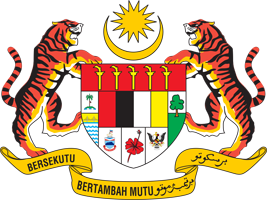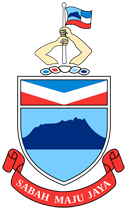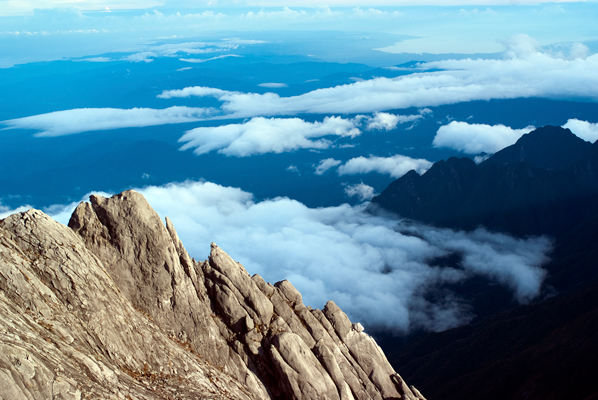Geography & Environment
Sabah is the second largest state in Malaysia after Sarawak, which shares its borders on Sabah's south west region. Along with Sarawak, it also shares borders with East Kalimantan of Indonesia in the south. The state's geographical structure is a mixture of mountainous regions, beaches and tropical rain forests. One of the most prominent ranges located at the centre of Sabah heartland is the Crocker Range, which houses several mountains of various heights from about 1,000 metres to 4,000 metres. The highest peak of this range at 4,095 metres (13,435 ft) above sea level is known as Mount Kinabalu; one of the highest mountain in South East Asia. The Crocker Mountain range stretches from the north to the south, dividing the hilly region on the west and the plains on the east. With the length of 560km and flows from the Crocker Mountain Range to the Sulu Sea at the east of Sandakan, the Kinabatangan River is easily the longest river in Sabah. Like the dense tropical forests in the state, the Kinabatangan River also supports many fascinating wildlife and houses habitats that are unique only to this region.
Sabah has a long history of setting aside important natural areas for conservation of its unique flora and fauna. These important wildlife regions for the purpose of fast and flexible protection of wildlife and habitats include: 
- Maliau Basin, otherwise dubbed as "Sabah's Lost World", is located in a conserved area surrounding the Maliau River in Tawau; the south Central Part of Sabah. Maliau Basin is an unusual assemblage of 12 forest types, comprising mainly of lower montane forest dominated by majestic Agathis trees, rare montane heath forest, and lowland/hill dipterocarp forest.
- Danum Valley, a sprawling 438 sq. kilometre of undisturbed land; which lies 70km west of Lahad Datu, boasts one of the richest conservation areas in the world with over 200 species of tree per hectare thriving on it. It is a natural home for endangered wildlife species such as the Sumatran Rhino, Banteng, Asian Elephant, Orang Utan, and Proboscis Monkey.
- Imbak Canyon, a conservation area located over 300 km south east of Kota Kinabalu is one of the biggest and last remaining areas of undisturbed lowland rainforest in Sabah. In this site, one can find the 30 meters-wide Imbak Falls, one of Sabah's widest, and the most outstanding waterfalls in Malaysia.
- Tabin, or better known as the Tabin Wildlife Reserve because of the large number of animals inhabiting its forest - some of which are highly endangered. Three of the largest mammals in Sabah, namely the Borneo Pygmy Elephant, Sumatran Rhinoceros and Tembadau (Borneo Wild Cattle), 8 primates species, 3 species of cats which are in the protected wildlife list, along with 42 families representing 220 species of birds can also be found here in the reserve.
- Kabili-Sepilok Forest Reserve, where the Sepilok Orang Utan Centre is located, protects a fraction of tropical lowland Dipterocarp forest which also includes a small coverage of mangrove swamp. This reserve also protects orang utans that have been rescued, rehabilitated and released into the forest. Other than the orang utans, it is also home other small and overlooked creatures.






